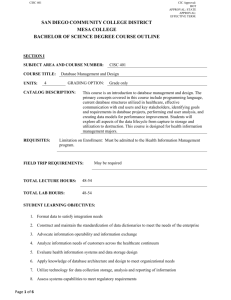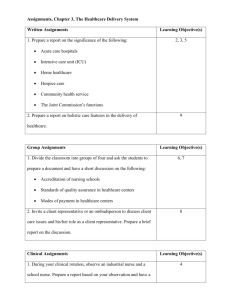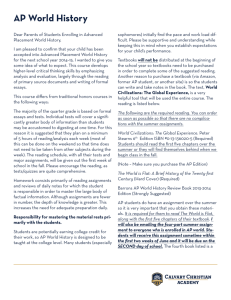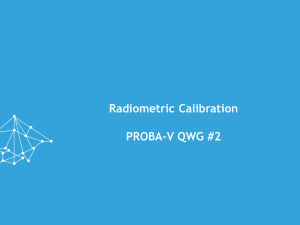HIMS 405 - Instructional Services
advertisement
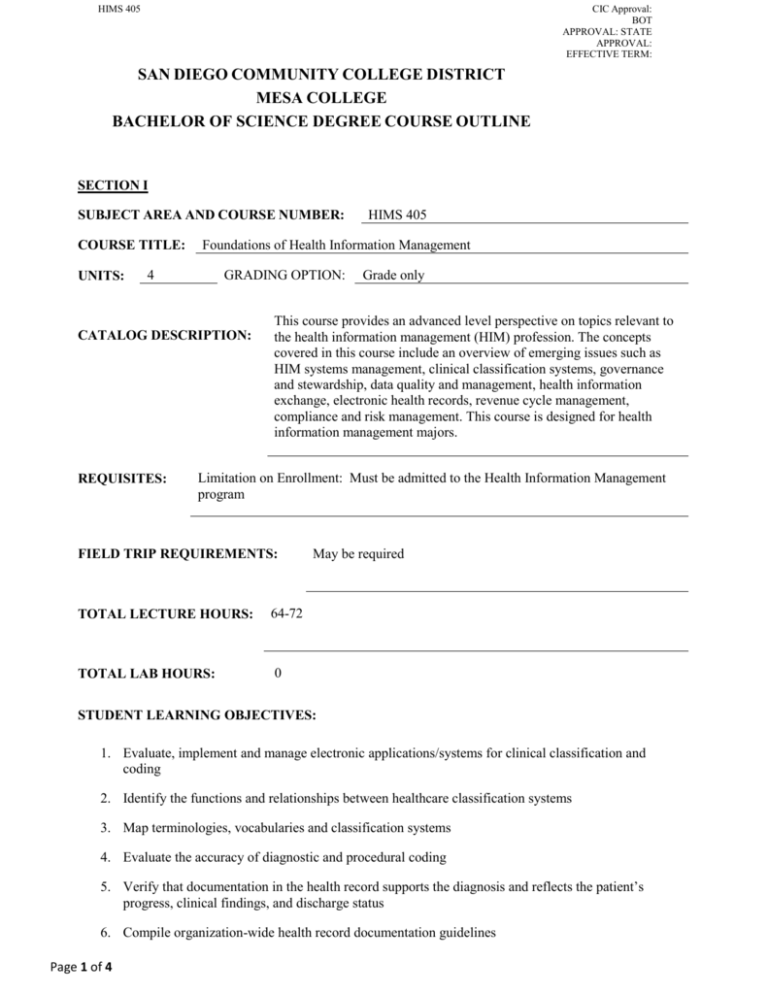
HIMS 405 CIC Approval: BOT APPROVAL: STATE APPROVAL: EFFECTIVE TERM: SAN DIEGO COMMUNITY COLLEGE DISTRICT MESA COLLEGE BACHELOR OF SCIENCE DEGREE COURSE OUTLINE SECTION I SUBJECT AREA AND COURSE NUMBER: COURSE TITLE: UNITS: Foundations of Health Information Management 4 GRADING OPTION: CATALOG DESCRIPTION: REQUISITES: HIMS 405 Grade only This course provides an advanced level perspective on topics relevant to the health information management (HIM) profession. The concepts covered in this course include an overview of emerging issues such as HIM systems management, clinical classification systems, governance and stewardship, data quality and management, health information exchange, electronic health records, revenue cycle management, compliance and risk management. This course is designed for health information management majors. Limitation on Enrollment: Must be admitted to the Health Information Management program FIELD TRIP REQUIREMENTS: TOTAL LECTURE HOURS: 64-72 TOTAL LAB HOURS: 0 May be required STUDENT LEARNING OBJECTIVES: 1. Evaluate, implement and manage electronic applications/systems for clinical classification and coding 2. Identify the functions and relationships between healthcare classification systems 3. Map terminologies, vocabularies and classification systems 4. Evaluate the accuracy of diagnostic and procedural coding 5. Verify that documentation in the health record supports the diagnosis and reflects the patient’s progress, clinical findings, and discharge status 6. Compile organization-wide health record documentation guidelines Page 1 of 4 HIMS 405 CIC Approval: BOT APPROVAL: STATE APPROVAL: EFFECTIVE TERM: SAN DIEGO COMMUNITY COLLEGE DISTRICT MESA COLLEGE BACHELOR OF SCIENCE DEGREE COURSE OUTLINE 7. Interpret health information standards, specifically for health information exchange 8. Differentiate between various models for health information exchange 9. Describe the purpose of healthcare data sets and standards and distinguish between primary and secondary data sources 10. Identify laws and regulations applicable to healthcare 11. Analyze the security and privacy implications of mobile health technologies 12. Create policies and procedures to manage access and disclosure of personal health information 13. Protect electronic health information through confidentiality and security measures, policies and procedures SECTION II 1. COURSE OUTLINE AND SCOPE: A. Outline Of Topics: The following topics are included in the framework of the course but are not intended as limits on content. The order of presentation and relative emphasis will vary with each instructor. I. US Healthcare Delivery System II. Health Information Systems: (a) Encoders, Computer Assisted Coding (b) Systems Development Life Cycle (c) Managerial technologies III. Healthcare classification systems, principles and applications of classification, taxonomies nomenclatures, terminologies, clinical vocabularies, auditing (a) ICD (b) CPT (c) SNOMED-CT (d) DSM (e) RxNorm (f) LOINC (g) ASTM Standard (h) HL7 (i) Mapping from a standard clinical terminology to a HIPAA code set (i) LOINC to CPT or (ii) SNOMED-CT to ICD (j) Mapping from one code set to another code set (e.g., ICD-9 to ICD-10) IV. Health record components (a) General requirements for documentation for all record types (b) Chart analysis and verification of clinical and administrative documentation Page 2 of 4 HIMS 405 CIC Approval: BOT APPROVAL: STATE APPROVAL: EFFECTIVE TERM: SAN DIEGO COMMUNITY COLLEGE DISTRICT MESA COLLEGE BACHELOR OF SCIENCE DEGREE COURSE OUTLINE V. VI. VII. VIII. IX. X. XI. XII. XIII. XIV. XV. Standards and regulations for documentation (a) The Joint Commission (b) CARF (c) CMS Health record documentation policies and procedures Health information standards and regulations (a) Health Information Exchange (HIE (i) Models of HIE Data stewardship Patient-centered health information technology Secondary data sources, registries, and indices Legal and ethical issues in health information management (a) HIPAA, The Joint Commission, State laws (b) Healthcare legal terminology (c) Centers for Medicare and Medicaid Services (CMS) (d) Medical Staff (e) Medical Identity Theft (f) Ethical issues related to coding, quality management (g) Confidentiality, privacy and security policies and procedures Security threats of mobile device, healthcare delivery via mobile devices Principles for releasing protected health information (PHI) Required elements of an authorization Audit techniques and principles B. Reading Assignments: Reading assignments are required and may include but, are not limited to, the following: I. Textbooks and resources II. Review of professional journals with relevant articles III. Online newsletters (e.g., American Standards Testing and Measurements , HL7, ISO) IV. Industry websites, as assigned C. Writing Assignments: Writing assignments are required and may include, but are not limited to, the following: I. Research paper and literature review of a health information topic, as assigned II. Preparing written presentation and deliver an oral presentation regarding a specific area of HIM D. Appropriate Outside Assignments: Outside assignments may include, but are not limited to, the following: I. View relevant videos, television documentaries, or talks from professional conferences II. Review professional literature for an individual or group presentation III. Interview a health information professional for class presentation and discussion IV. Tour a HIM department and write a report on the experience V. Attend or volunteer at local, state or national professional meetings or conferences E. Appropriate Assignments that Demonstrate Critical Thinking: Critical thinking assignments are required and may include, but are not limited to, the following: I. Analyze an HIM problem and propose a solution, based on research II. Use library resources to compare and contrast HIM roles and responsibilities; hospital data and healthcare issues and trends III. Group discussions/brainstorming sessions to critically think about US healthcare reform IV. Review, analyze and compare paper and electronic records (quantitative, qualitative, data elements, and standards) Page 3 of 4 HIMS 405 CIC Approval: BOT APPROVAL: STATE APPROVAL: EFFECTIVE TERM: SAN DIEGO COMMUNITY COLLEGE DISTRICT MESA COLLEGE BACHELOR OF SCIENCE DEGREE COURSE OUTLINE 2. METHODS OF EVALUATION: A student's grade will be based on multiple measures of performance unless the course requires no grade. Multiple measures may include, but are not limited to, the following (bulleted list): I. Quizzes II. Examinations III. Oral reports IV. Written reports V. Scenario-based exercises VI. Self and peer assessments x x x x x x x 3. METHODS OF INSTRUCTION: Methods of instruction may include, but are not limited to, the following: Lecture Laboratory Lecture-lab combination Distance Education Computer Assisted Instruction Lecture Discussion Learning Modules Audio Visual Collaborative Learning Shadowing Other (please specify): Guest speakers 4. REQUIRED TEXTS AND SUPPLIES: Textbooks listed are the latest editions available. Textbooks may include, but are not limited to: TEXTBOOKS: Sayles, N. (2013) Health Information Management: Concepts, Principles and Practice, Fourth Edition, AHIMA Press, Chicago. ISBN: 978-1-58426-352-7 Schnering, P., Sayles, N. & McCuen, C. (2013) Case Studies for Health Information Management, Second Edition, Cengage Learning, Stamford, CT. ISBN: 978-1133602682 MANUALS: PERIODICALS: Journal of AHIMA SOFTWARE: AHIMA Virtual Lab; Neehr Perfect-Vista Electronic Health Record software SUPPLIES: ORIGINATOR: Connie Renda CO-CONTRIBUTOR(S): Kirsten J. Copenhaver Page 4 of 4
